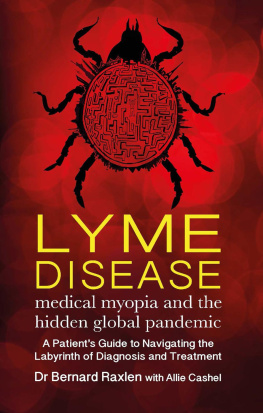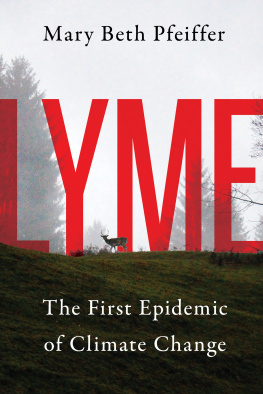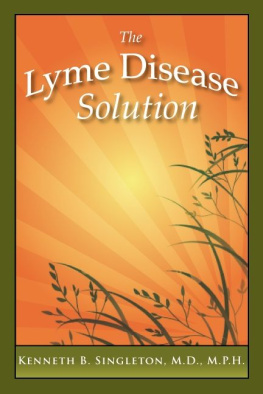Published by The History Press
Charleston, SC 29403
www.historypress.net
Copyright 2015 by Michaelle Pearson and Jim Lampos
All rights reserved
First published 2015
e-book edition 2015
ISBN 978.1.62585.313.4
Library of Congress Control Number: 2015933529
print edition ISBN 978.1.62619.790.9
Notice: The information in this book is true and complete to the best of our knowledge. It is offered without guarantee on the part of the author or The History Press. The author and The History Press disclaim all liability in connection with the use of this book.
All rights reserved. No part of this book may be reproduced or transmitted in any form whatsoever without prior written permission from the publisher except in the case of brief quotations embodied in critical articles and reviews.
To Phoebe and Silvanos, with love.
Acknowledgements
The authors wish to thank the following organizations and people for their assistance in making Remarkable Women of Old Lyme possible.
Connecticut Historical Society
Connecticut State Library
Florence Griswold Museum
Lyme Academy College of Fine Arts
Museum of Connecticut History
New London Library
Old Lyme Historical Society
Old Lyme Phoebe Griffin Noyes Library
Nicole Wholean for her assistance at the Lyme Historical Society Archive.
Alison Mitchell for her support and suggestions.
C. Townsend Ludington for his insights and editorial advice.
Mary Fiorelli, Linda Alexander and the entire staff at the OLPGN Library, for everything.
Sierra Dixon and the staff of the Connecticut Historical Society.
Diana Atwood-Johnson, Christopher B. Steiner and Whitney Talcott for their insights and assistance with images.
Jennifer Hillhouse, Ned Perkins, Jim Meehan and William Eastman for providing images when we needed them most.
Kathryn Winchell and Judy Tooker for ideas and introductions.
A special thank-you to Robert Couteau for his sage advice and editing.
Founders and Revolutionaries
An Introduction to Old Lyme
Situated on the Connecticut coast, about halfway between New York and Boston, the town of Old Lyme* is not your typical suburban community. From its founding, this venerable town has prided itself on being quirky and independent. Its rich history is written on the landscape and cherished in the hearts of its citizens. A great many of the heroic figures who have shaped Old Lymes history and character are women. Some of their stories are well known and often retold while others have unjustly been forgotten. The purpose of this book will be to recollect the old stories, uncover new ones and celebrate the accomplishments of these women who deserve to be remembered by future generations.
The women of Old Lyme have been pioneers in politics, business, education and the arts. Perhaps the unique circumstances of the towns settlement encouraged a strong streak of self-reliance and creativity in these women.
Old Lyme was part of the Saybrook Colony, and unlike neighboring colonies, such as Massachusetts Bay and Rhode Island, Saybrook was not founded as a religious refuge. It was founded in 1635 by the followers of Oliver Cromwell, the parliamentarians of the English Civil War, who sought to dethrone King Charles I and establish a more representative English government. They were landed gentry, entrepreneurs and investorsa class that was ascendant in terms of influence and power in the early seventeenth century. They established Saybrook Colony at the mouth of the Connecticut River primarily for commercial purposes and also as a place of refuge for Cromwellian gentlemen of quality should they need to flee England and establish a government-in-exile. Unlike the surrounding colonies founded by religious dissenters who were nevertheless loyal to the Crown, Saybrooks founders were enemies to the king.
Once Cromwells victory seemed assured, Saybrook was no longer needed as a place of refuge. Governor George Fenwick sold Saybrook Colony to the Colony of Connecticut in 1644 and returned to England the following year to fight alongside Cromwells forces. He then was appointed commissioner to the trial of King Charles I. The king was charged with treason, found guilty and beheaded in 1649.
Fenwick bequeathed the colonys land east of the Connecticut River to Matthew Griswold in 1645. Making his home at the confluence of the Black Hall and Connecticut Rivers along the shores of the Long Island Sound, Griswold was the first settler of what would become Old Lyme. The lands of the former Saybrook Colony were now in the hands of gentlemen farmers, ships captains, tradesmen, artisans and men like Griswold who were primarily concerned with securing their own prosperity. These were practical people who were not hidebound by religious convention or custom. They relied on their wives to administer their affairs and manage their estates while they were away at sea or tending to other business, and from the earliest records, we find something unique: property owned by women in their own names.
It was not only unusual for married women to hold property in their own names but also practically unheard of, even illegal. But Old Lyme was not a usual sort of place. The Salisbury-MacCurdy Family Histories and Genealogies notes that in Connecticut as everywhere else in New England, the property of a wife, unless it was settled upon her before marriage, went by law to the husband, subject to his disposal. Matthew Griswold, however, had a liberal and enlarged view, very much in advance of his age. Hannah Griswold inherited substantial meadowlands in Windsor, Connecticut, while she was married to Matthew. In a document dated April 23, 1663, it was written that this parcel of meadow is allowed by her Husband Matthew Griswold to be recorded and made over to Hannah his wife to remain to her and her children, and their Dispose, forever. It would be a mistake to make too much of this fact and say that women enjoyed equal station with men in seventeenth-century Old Lyme, but still, we can say that by virtue of their administration of family estates and direct ownership of land, these women had an authority and economic empowerment that was unusual and quite possibly unique for the time.
Along with this measure of womens economic empowerment, the second unique factor in Old Lyme was its attitude toward religion. Not only civic custom but also religious law proscribed the role of women. While no doubt devout, Old Lymes residents seemed to adopt a more cavalier attitude toward religious matters than the typical New Englander. When Old Lyme, then called Lyme, separated from Saybrook in 1665 (an event known as the Loving Parting) and established itself as an independent town, Moses Noyes was hired to be the new towns preacher. Noyes would not become a regularly ordained minister, however, and Lyme would not formally organize a church until nearly thirty years later, in 1693.
In Lyme Miscellany 17761976, Christopher Collier writes:
Thus the secular dominance manifested in Lymes history is intrinsic to its records. Without an approved church, Moses Noyes was not ordained and was therefore officially unable to administer the sacraments of baptism and communion. Subsequent events indicated that they continued without religious organization until 1693. This was certainly a most extraordinary lack of godly concern for seventeenth century Connecticut. Indeed, this anomalous situation may have been unique.









